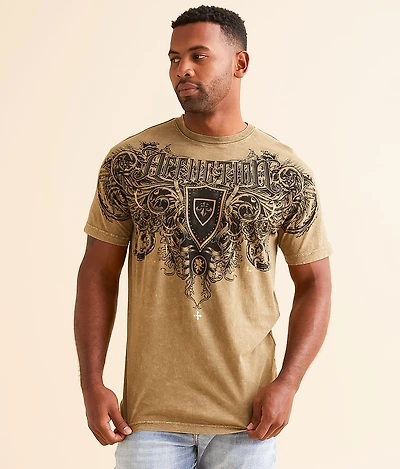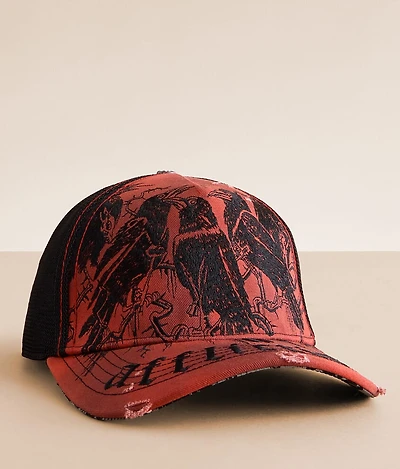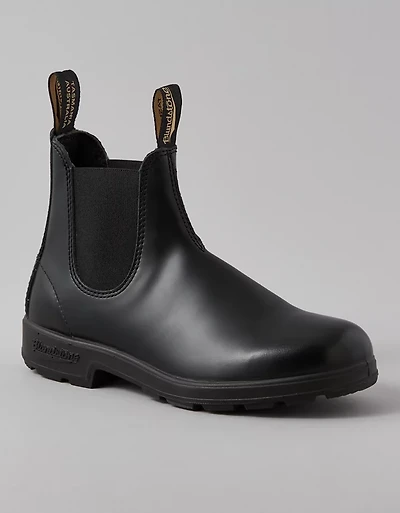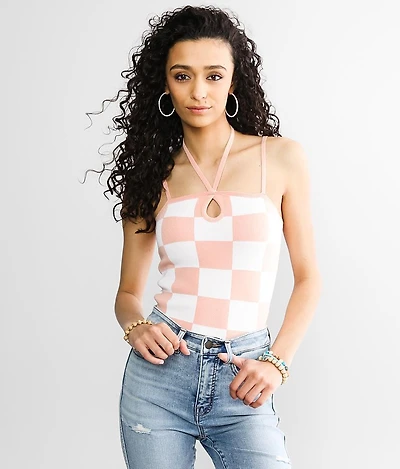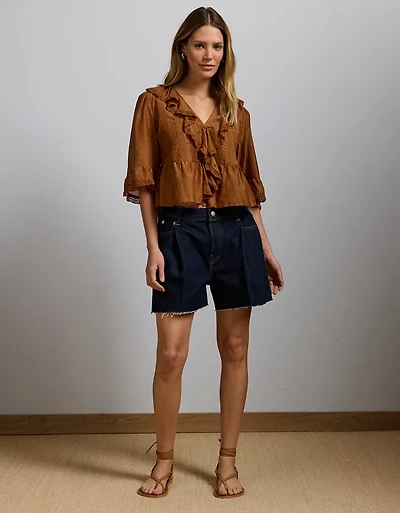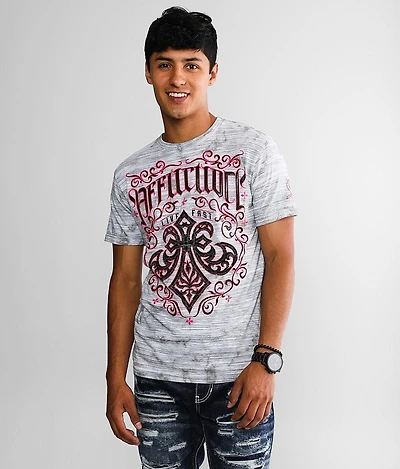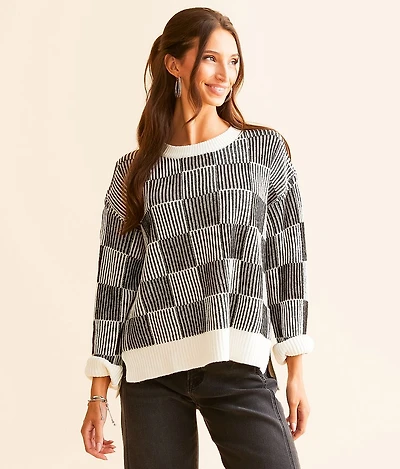Home
Cómo ser una mujer del Renacimiento: Mujeres, poder y el nacimiento del mito de la belleza / How to Be a Renaissance Woman
Barnes and Noble
Loading Inventory...
Cómo ser una mujer del Renacimiento: Mujeres, poder y el nacimiento del mito de la belleza / How to Be a Renaissance Woman
Current price: $19.95

Barnes and Noble
Cómo ser una mujer del Renacimiento: Mujeres, poder y el nacimiento del mito de la belleza / How to Be a Renaissance Woman
Current price: $19.95
Loading Inventory...
Size: OS
*Product information may vary - to confirm product availability, pricing, shipping and return information please contact Barnes and Noble
Una historia alternativa del Renacimiento contada por las mujeres detrás de las pinturas.
Belleza, maquillaje, arte, poder:
Cómo ser una mujer en el Renacimiento
presenta una historia alternativa de este fascinante período contada por las mujeres detrás de las pinturas.
El Renacimiento fue una época obsesionada por las apariencias: el mundo visual se pobló de desnudos de la mano de artistas como Miguel Ángel y Tiziano y emergió una vibrante escena literaria alrededor de consejos de belleza, cosméticos y adornos. Jill Burke nos lleva desde las bulliciosas plazas del mercado italiano hasta los niveles más altos de la sociedad renacentista para acercarnos a las vidas de cortesanas, artistas, actrices y escritoras que se labraron un espacio propio, así como aquellas que ganaron poder e influencia en el despiadado mundo de la corte o las que se rebelaron contra las restricciones de su época en un momento en el que las valoraciones sobre los cuerpos y el color de la piel estaban en el punto de mira debido al contexto colonial.
Esta vívida exploración de la vida íntima de las mujeres renacentistas nos invita a cuestionar las ideas de tenemos sobre nuestro propio cuerpo a la vez que desentraña los orígenes de los ideales de belleza que todavía nos acompañan en la actualidad.
«Nunca verás los retratos del Renacimiento de la misma manera.»
Maggie O’Farrell, autora de
Hamnet
y
El retrato de casada
ENGLISH DESCRIPTION
An alternative history of the Renaissance—as seen through the emerging literature of beauty tips—focusing on the actresses, authors, and courtesans who rebelled against the misogyny of their era.
Beauty, make-up, art, power: How to Be a Renaissance Woman presents an alternative history of this fascinating period as told by the women behind the paintings, providing a window into their often overlooked or silenced lives.
Can the pressures women feel to look good be traced back to the sixteenth century?
As the Renaissance visual world became populated by female nudes from the likes of Michelangelo and Titian, a vibrant literary scene of beauty tips emerged, fueling debates about cosmetics and adornment. Telling the stories of courtesans, artists, actresses, and writers rebelling against the strictures of their time, when burgeoning colonialism gave rise to increasingly sinister evaluations of bodies and skin color, this book puts beauty culture into the frame.
How to Be a Renaissance Woman
will take readers from bustling Italian market squares, the places where the poorest women and immigrant communities influenced cosmetic products and practices, to the highest echelons of Renaissance society, where beauty could be a powerful weapon in securing strategic marriages and family alliances. It will investigate how skin-whitening practices shifted in step with the emerging sub-Saharan African slave trade, how fads for fattening and thinning diets came and went, and how hairstyles and fashion could be a tool for dissent and rebellion—then as now.
This surprising and illuminating narrative will make you question your ideas about your own body, and ask: Why are women often so critical of their appearance? What do we stand to lose, but also to gain, from beauty culture? What is the relationship between looks and power?
Belleza, maquillaje, arte, poder:
Cómo ser una mujer en el Renacimiento
presenta una historia alternativa de este fascinante período contada por las mujeres detrás de las pinturas.
El Renacimiento fue una época obsesionada por las apariencias: el mundo visual se pobló de desnudos de la mano de artistas como Miguel Ángel y Tiziano y emergió una vibrante escena literaria alrededor de consejos de belleza, cosméticos y adornos. Jill Burke nos lleva desde las bulliciosas plazas del mercado italiano hasta los niveles más altos de la sociedad renacentista para acercarnos a las vidas de cortesanas, artistas, actrices y escritoras que se labraron un espacio propio, así como aquellas que ganaron poder e influencia en el despiadado mundo de la corte o las que se rebelaron contra las restricciones de su época en un momento en el que las valoraciones sobre los cuerpos y el color de la piel estaban en el punto de mira debido al contexto colonial.
Esta vívida exploración de la vida íntima de las mujeres renacentistas nos invita a cuestionar las ideas de tenemos sobre nuestro propio cuerpo a la vez que desentraña los orígenes de los ideales de belleza que todavía nos acompañan en la actualidad.
«Nunca verás los retratos del Renacimiento de la misma manera.»
Maggie O’Farrell, autora de
Hamnet
y
El retrato de casada
ENGLISH DESCRIPTION
An alternative history of the Renaissance—as seen through the emerging literature of beauty tips—focusing on the actresses, authors, and courtesans who rebelled against the misogyny of their era.
Beauty, make-up, art, power: How to Be a Renaissance Woman presents an alternative history of this fascinating period as told by the women behind the paintings, providing a window into their often overlooked or silenced lives.
Can the pressures women feel to look good be traced back to the sixteenth century?
As the Renaissance visual world became populated by female nudes from the likes of Michelangelo and Titian, a vibrant literary scene of beauty tips emerged, fueling debates about cosmetics and adornment. Telling the stories of courtesans, artists, actresses, and writers rebelling against the strictures of their time, when burgeoning colonialism gave rise to increasingly sinister evaluations of bodies and skin color, this book puts beauty culture into the frame.
How to Be a Renaissance Woman
will take readers from bustling Italian market squares, the places where the poorest women and immigrant communities influenced cosmetic products and practices, to the highest echelons of Renaissance society, where beauty could be a powerful weapon in securing strategic marriages and family alliances. It will investigate how skin-whitening practices shifted in step with the emerging sub-Saharan African slave trade, how fads for fattening and thinning diets came and went, and how hairstyles and fashion could be a tool for dissent and rebellion—then as now.
This surprising and illuminating narrative will make you question your ideas about your own body, and ask: Why are women often so critical of their appearance? What do we stand to lose, but also to gain, from beauty culture? What is the relationship between looks and power?
Una historia alternativa del Renacimiento contada por las mujeres detrás de las pinturas.
Belleza, maquillaje, arte, poder:
Cómo ser una mujer en el Renacimiento
presenta una historia alternativa de este fascinante período contada por las mujeres detrás de las pinturas.
El Renacimiento fue una época obsesionada por las apariencias: el mundo visual se pobló de desnudos de la mano de artistas como Miguel Ángel y Tiziano y emergió una vibrante escena literaria alrededor de consejos de belleza, cosméticos y adornos. Jill Burke nos lleva desde las bulliciosas plazas del mercado italiano hasta los niveles más altos de la sociedad renacentista para acercarnos a las vidas de cortesanas, artistas, actrices y escritoras que se labraron un espacio propio, así como aquellas que ganaron poder e influencia en el despiadado mundo de la corte o las que se rebelaron contra las restricciones de su época en un momento en el que las valoraciones sobre los cuerpos y el color de la piel estaban en el punto de mira debido al contexto colonial.
Esta vívida exploración de la vida íntima de las mujeres renacentistas nos invita a cuestionar las ideas de tenemos sobre nuestro propio cuerpo a la vez que desentraña los orígenes de los ideales de belleza que todavía nos acompañan en la actualidad.
«Nunca verás los retratos del Renacimiento de la misma manera.»
Maggie O’Farrell, autora de
Hamnet
y
El retrato de casada
ENGLISH DESCRIPTION
An alternative history of the Renaissance—as seen through the emerging literature of beauty tips—focusing on the actresses, authors, and courtesans who rebelled against the misogyny of their era.
Beauty, make-up, art, power: How to Be a Renaissance Woman presents an alternative history of this fascinating period as told by the women behind the paintings, providing a window into their often overlooked or silenced lives.
Can the pressures women feel to look good be traced back to the sixteenth century?
As the Renaissance visual world became populated by female nudes from the likes of Michelangelo and Titian, a vibrant literary scene of beauty tips emerged, fueling debates about cosmetics and adornment. Telling the stories of courtesans, artists, actresses, and writers rebelling against the strictures of their time, when burgeoning colonialism gave rise to increasingly sinister evaluations of bodies and skin color, this book puts beauty culture into the frame.
How to Be a Renaissance Woman
will take readers from bustling Italian market squares, the places where the poorest women and immigrant communities influenced cosmetic products and practices, to the highest echelons of Renaissance society, where beauty could be a powerful weapon in securing strategic marriages and family alliances. It will investigate how skin-whitening practices shifted in step with the emerging sub-Saharan African slave trade, how fads for fattening and thinning diets came and went, and how hairstyles and fashion could be a tool for dissent and rebellion—then as now.
This surprising and illuminating narrative will make you question your ideas about your own body, and ask: Why are women often so critical of their appearance? What do we stand to lose, but also to gain, from beauty culture? What is the relationship between looks and power?
Belleza, maquillaje, arte, poder:
Cómo ser una mujer en el Renacimiento
presenta una historia alternativa de este fascinante período contada por las mujeres detrás de las pinturas.
El Renacimiento fue una época obsesionada por las apariencias: el mundo visual se pobló de desnudos de la mano de artistas como Miguel Ángel y Tiziano y emergió una vibrante escena literaria alrededor de consejos de belleza, cosméticos y adornos. Jill Burke nos lleva desde las bulliciosas plazas del mercado italiano hasta los niveles más altos de la sociedad renacentista para acercarnos a las vidas de cortesanas, artistas, actrices y escritoras que se labraron un espacio propio, así como aquellas que ganaron poder e influencia en el despiadado mundo de la corte o las que se rebelaron contra las restricciones de su época en un momento en el que las valoraciones sobre los cuerpos y el color de la piel estaban en el punto de mira debido al contexto colonial.
Esta vívida exploración de la vida íntima de las mujeres renacentistas nos invita a cuestionar las ideas de tenemos sobre nuestro propio cuerpo a la vez que desentraña los orígenes de los ideales de belleza que todavía nos acompañan en la actualidad.
«Nunca verás los retratos del Renacimiento de la misma manera.»
Maggie O’Farrell, autora de
Hamnet
y
El retrato de casada
ENGLISH DESCRIPTION
An alternative history of the Renaissance—as seen through the emerging literature of beauty tips—focusing on the actresses, authors, and courtesans who rebelled against the misogyny of their era.
Beauty, make-up, art, power: How to Be a Renaissance Woman presents an alternative history of this fascinating period as told by the women behind the paintings, providing a window into their often overlooked or silenced lives.
Can the pressures women feel to look good be traced back to the sixteenth century?
As the Renaissance visual world became populated by female nudes from the likes of Michelangelo and Titian, a vibrant literary scene of beauty tips emerged, fueling debates about cosmetics and adornment. Telling the stories of courtesans, artists, actresses, and writers rebelling against the strictures of their time, when burgeoning colonialism gave rise to increasingly sinister evaluations of bodies and skin color, this book puts beauty culture into the frame.
How to Be a Renaissance Woman
will take readers from bustling Italian market squares, the places where the poorest women and immigrant communities influenced cosmetic products and practices, to the highest echelons of Renaissance society, where beauty could be a powerful weapon in securing strategic marriages and family alliances. It will investigate how skin-whitening practices shifted in step with the emerging sub-Saharan African slave trade, how fads for fattening and thinning diets came and went, and how hairstyles and fashion could be a tool for dissent and rebellion—then as now.
This surprising and illuminating narrative will make you question your ideas about your own body, and ask: Why are women often so critical of their appearance? What do we stand to lose, but also to gain, from beauty culture? What is the relationship between looks and power?
